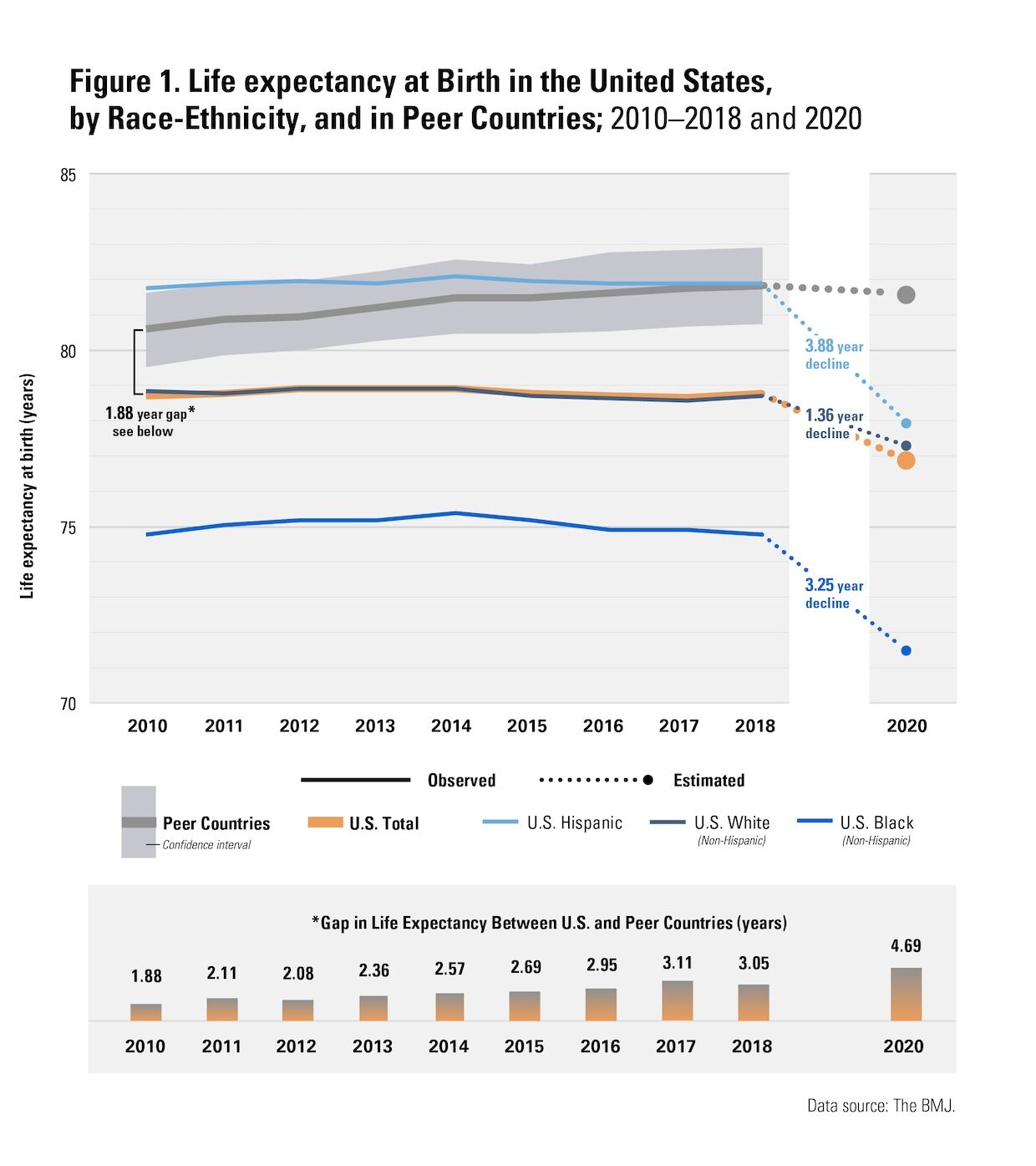The coronavirus pandemic led to the largest drop in U.S. life expectancy since World War II, disproportionately affecting people of color, according to a new analysis involving researchers from Virginia Commonwealth University.
In data released Wednesday in The BMJ, a peer-reviewed journal published by the British Medical Association, researchers compared death statistics in 16 high-income countries and found that overall U.S. life expectancy fell by 1.87 years between 2018 and 2020 — the largest decrease since 1943.
But a stark contrast was evident when the data was broken down by race: While life expectancy among white Americans fell 1.36 years in 2020, it dove by 3.25 years in Black Americans and 3.88 years among Hispanics.
The findings reflect the pandemic’s well-documented increased mortality for people of color. According to The COVID Tracking Project, which records racial disparities in coronavirus-related deaths and infections, Black people have died at 1.4 times the rate of white people nationwide.
“When the pandemic came, my naive assumption was that it would not have a big impact on the preexisting gap between the U.S. and peer countries,” Steven Woolf, the study’s lead author and director emeritus of VCU’s Center on Society and Health, said in a news release detailing the findings.
“It was a pandemic, and I assumed that every country would take a hit. What I did not anticipate was how badly the U.S. would fare in the pandemic and the enormous death toll that the U.S. would experience.”
The U.S. fared 8.5 times worse than the average life expectancy for the 16 countries analyzed, including South Korea, Taiwan, France and Great Britain. Declines for minority populations were 15 to 18 times larger than the other countries.
Italy and Spain, both hard-hit last spring, also saw poor metrics in overall life expectancy, researchers found — though the U.S. still did worse.
Deaths attributed to the coronavirus pandemic surpassed 600,000 on June 15. Mass vaccinations have alleviated fatality rates since January, although Woolf said there is much work to be done in understanding the virus’ uneven impact on disadvantaged communities.
“It’s a big setback because, for many years, the U.S. had been making progress in closing the Black-white mortality gap,” Woolf said.
“And Hispanic Americans, for many years, enjoyed higher life expectancies than whites, but that advantage was almost completely erased by COVID-19.”









